Rasna (Pluchea lanceolata) : Rasna Plant Benefits
Introduction to Rasna (Pluchea lanceolata)
In the vast world of Ayurvedic medicine, Rasna (Pluchea lanceolata) holds a prestigious position. Known for its extraordinary therapeutic virtues, it is extensively used in traditional formulations aimed at relieving joint disorders, musculoskeletal pains, and inflammatory conditions. This perennial herb, revered for centuries, is a staple in classical Ayurvedic texts and continues to be a subject of modern pharmacological studies.
Botanical Description and Distribution
Rasna, scientifically termed Pluchea lanceolata, belongs to the family Asteraceae. It is a perennial undershrub characterized by erect, branched stems covered in soft, silky hairs. The leaves are lance-shaped, serrated at the margins, and emit a faintly aromatic scent when crushed. The plant flourishes in arid and semi-arid regions, predominantly found in India, Pakistan, and parts of tropical Africa.
Its ability to thrive in dry, sandy soils makes it a valuable resource in regions with limited water availability. In India, it is commonly found in Rajasthan, Punjab, Gujarat, and Madhya Pradesh.
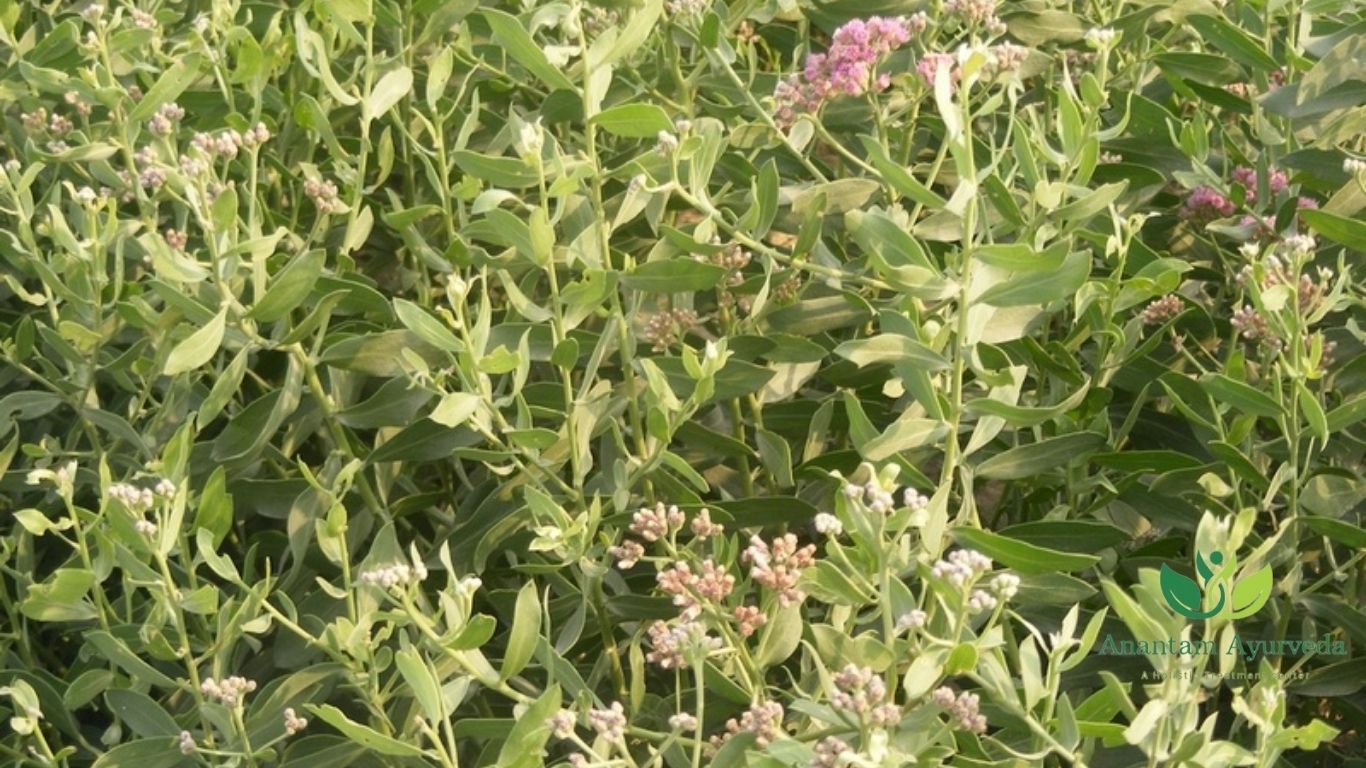
Vernacular Names of Rasna
Rasna is widely recognized across different regions of India, each assigning it a unique local name:
-
Hindi: Rayasan, Vayusurai
-
Punjabi: Sarmai
-
Other Indian Languages: Commonly referred to as Rasna
The consistency in its naming across diverse linguistic backgrounds underscores Rasna’s profound cultural and medicinal integration in India.
Sanskrit Synonyms of Rasna
Ancient Ayurvedic texts describe Rasna with multiple Sanskrit synonyms, each highlighting its unique properties:
-
Elaparni: Leaves resembling those of the cardamom plant
-
Gandhanakuli, Gandhamoola, Sugandha, Surabhi: Reflecting the fragrant nature of its leaves and roots
-
Yuktarasa, Yukta: Emphasizing its multi-disease healing capabilities
-
Rasadya, Atirasa, Rasya, Surasa, Rasana, Rasna: Denoting its capacity to enhance Rasa Dhatu (nutritional fluid of the body)
-
Suvaha, Surabhi: Celebrated for its sweet and pleasant aroma
-
Shreyasi: Hailed as the best herb for managing Vata disorders
-
Nakuli: Signifying its natural appeal to mongooses, hinting at its purity and medicinal potency
These synonyms not only capture the physical characteristics of Rasna but also its profound therapeutic virtues.
Morphology of Rasna (Pluchea lanceolata)
Rasna presents itself as a small, bushy plant growing to a height of approximately 2 to 4 feet. The plant bears white, pale yellow, or pale purple flowers, lending it a subtle beauty. Its structure is marked by simple, aromatic leaves that enhance its identification and usage in herbal practices.
The overall morphology of Rasna makes it an easy-to-grow and widely accessible herb, especially valued for its resilience in diverse climatic conditions.
Distribution of Rasna
Rasna is predominantly found in:
-
Punjab
-
Gujarat
-
Rajasthan
The fertile plains of the Ganga basin and the semi-arid regions of northwestern India offer the perfect environment for Rasna’s growth. Its adaptability to these regions ensures its abundant availability for medicinal purposes.
Types of Rasna According to Raja Nighantu
The Raja Nighantu, an authoritative Ayurvedic text, identifies three distinct types of Rasna:
-
Moola Rasna: Refers to the root variety, considered rich in medicinal potency.
-
Patra Rasna: Refers to the leaf variety, equally valued for its therapeutic benefits.
-
Truna Rasna: A grass-like variant, generally regarded as inferior compared to the first two.
Among these, Moola Rasna and Patra Rasna are considered superior due to their stronger medicinal properties and broader applications in traditional treatments.
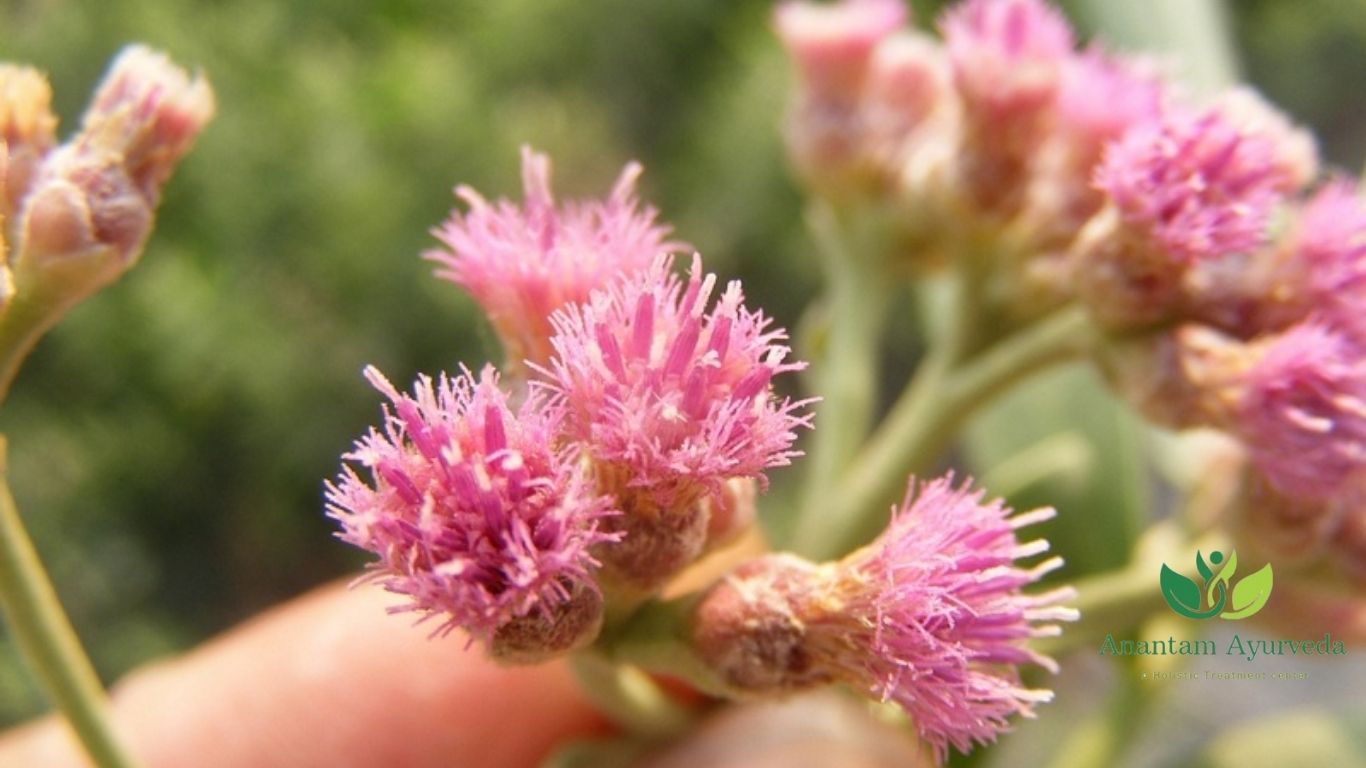
Classical Categorization of Rasna in Ayurvedic Texts
Rasna holds a prestigious place in numerous Ayurvedic scriptures, demonstrating its versatile usage and high regard among ancient scholars:
-
Charaka Samhita:
-
Anuvasanopaga: Included among herbs useful for Anuvasana Basti (therapeutic oil enemas).
-
Vayasthapana: Classified in the group of herbs believed to promote longevity and delay aging.
-
-
Sushruta Samhita:
-
Arkadi Gana: Group of herbs prescribed for various therapeutic preparations.
-
Sleshmashamshamana Varga: Herbs specifically useful for balancing Kapha Dosha and relieving associated disorders.
-
-
Kaiyadeva Nighantu:
-
Listed under Oshadhi Varga, highlighting its significance as a potent medicinal herb.
-
-
Dhanvantari Nighantu:
-
Categorized under Guduchyadi Varga, reflecting its use alongside other rejuvenating herbs.
-
-
Bhavaprakasha:
-
Placed within the Haritakyadi Varga, signifying its role among restorative and cleansing herbs.
-
-
Raja Nighantu:
-
Assigned to the Pippalyadi Varga, emphasizing its importance in treating a range of systemic disorders.
-
These categorizations affirm Rasna’s broad utility, ranging from promoting youthfulness to treating stubborn Kapha and Vata disorders.
Scientific Classification of Rasna (Pluchea lanceolata)
From a botanical perspective, it is classified as follows:
-
Kingdom: Plantae
-
Order: Asterales
-
Family: Asteraceae
-
Subfamily: Asteroideae
-
Tribe: Inuleae
-
Genus: Pluchea
This classification situates Rasna among a large family of flowering plants known for their robust medicinal profiles, thus bridging traditional knowledge with modern botanical science.
Ayurvedic Properties of Rasna
In Ayurveda, every herb is analyzed based on its Rasa (taste), Guna (qualities), Vipaka (post-digestive effect), Veerya (potency), Karma (action), and Prabhava (unique effect). Rasna (Pluchea lanceolata) is no exception, offering a powerful combination of attributes that contribute to its broad therapeutic spectrum.
-
Rasa (Taste): Tikta (Bitter) – Bitter taste aids in detoxifying and reducing inflammation.
-
Guna (Qualities): Guru (Heavy) – Heaviness provides a grounding effect on the body, making it suitable for Vata disorders.
-
Vipaka (Post-Digestive Taste): Katu (Pungent) – Promotes digestion and stimulates metabolism.
-
Veerya (Potency): Ushna (Hot) – Enhances circulation, digestion, and reduces stiffness in joints.
-
Karma (Action): Kaphavata Shamaka – Effectively balances Kapha and Vata doshas, making it beneficial for joint, respiratory, and nervous system disorders.
-
Prabhava (Unique Effect): Vishagna – Acts as an anti-toxic agent, neutralizing poisons and environmental toxins.
These combined properties make Rasna highly effective in treating conditions like arthritis, sciatica, asthma, inflammatory disorders, and neurological imbalances.
Part of the Plant Used
The healing potential of Rasna lies primarily in its leaves and rhizomes:
-
Leaves – Rich in volatile compounds and aromatic oils that are especially effective for respiratory and joint-related treatments.
-
Rhizome (Rootstock) – Contains deeper penetrating properties, making it ideal for chronic Vata-Kapha imbalances, especially in muscular and skeletal conditions.
Dosage of Rasna in Ayurveda
Dosage may vary based on the formulation and the patient’s condition, but the general therapeutic guidelines are:
-
Decoction (Kashayam): 40 to 50 ml per day (in divided doses), typically administered with warm water.
-
Powder (Churna): 3 to 6 grams per day, either with honey or lukewarm water, preferably before meals.
These preparations are often included in classical formulations or as standalone remedies for joint pain, digestive issues, and respiratory discomforts.
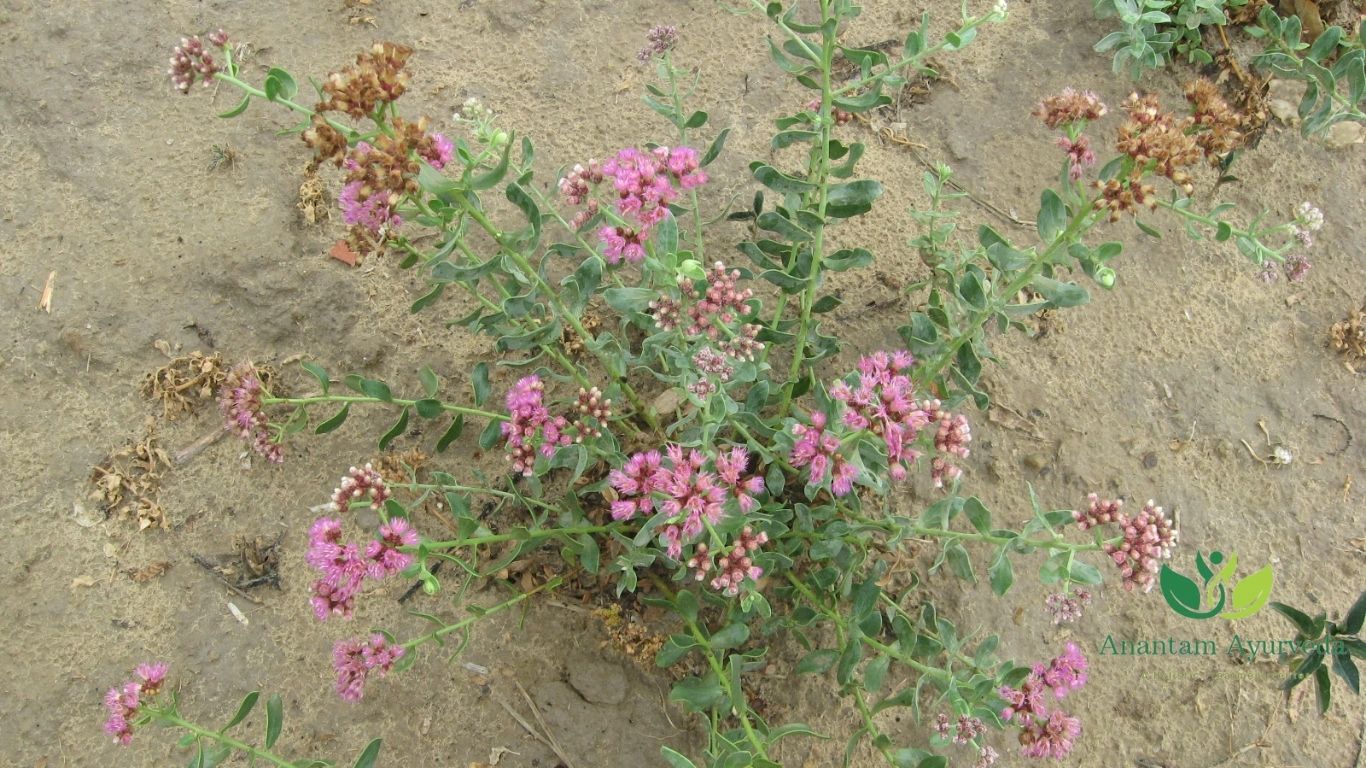
Chemical Constituents of Rasna
From a modern phytochemical standpoint, Rasna (Pluchea lanceolata) is abundant in bioactive compounds that validate its traditional uses:
-
Moretenol
-
Neolupenol
-
Hexacosanoic acid
-
Tetracosanoic acid
-
Triacontanol
-
Stigmasterol
-
Beta-sitosterol-D-glucoside
These compounds exhibit anti-inflammatory, analgesic, anti-rheumatic, anti-toxic, and immunomodulatory properties. They contribute significantly to Rasna’s effectiveness in managing rheumatoid arthritis, skin disorders, and oxidative stress-related conditions.
Therapeutic Uses of Rasna in Ayurveda
1. Management of Joint Disorders
Rasna is hailed for its anti-inflammatory and analgesic properties, particularly in combating arthritis, gout, and rheumatoid arthritis. It alleviates stiffness, reduces swelling, and enhances joint mobility, making it a cornerstone herb in Vatarakta and Sandhivata treatments.
2. Musculoskeletal Health
Traditional Ayurvedic texts describe it as a potent remedy for muscle spasms, sprains, and general body aches. It strengthens muscles and tendons while mitigating pain and inflammation.
3. Respiratory Disorders
Rasna’s hot potency and Kapha-pacifying action make it highly effective in treating cough, cold, bronchitis, and asthma. It helps clear respiratory blockages and soothes the airways.
4. Digestive Wellness
By stimulating the digestive fire (Agni), it aids in overcoming conditions like indigestion, flatulence, and abdominal bloating. It supports optimal digestion by reducing Ama (toxins) accumulation.
5. Detoxification and Rejuvenation
it facilitates the elimination of toxins through its deep-penetrating properties. It acts as a Rasayana (rejuvenative), promoting longevity and maintaining tissue health.
Ayurvedic Formulations Containing Rasna
Several renowned Ayurvedic preparations incorporate Rasna for its versatile healing properties:
1. Rasna Saptaka Kwatha
Rasna Saptaka Kwatha is a widely prescribed decoction primarily used for managing rheumatoid arthritis, sciatica, low back pain, and musculoskeletal disorders.
-
Ingredients: Rasna, Guduchi, Eranda Moola, Aragwadh, Shunthi, Devadaru, and Punarnava.
-
Action: Works as an anti-inflammatory, analgesic, and Vata-Kapha balancing agent.
-
Dosage: 40–50 ml of decoction, twice daily before meals.
2. Rasnairandadi Kashayam
Rasnairandadi Kashayam is an excellent herbal decoction specially formulated to treat paralysis, muscle stiffness, and joint diseases.
-
Ingredients: Rasna, Eranda Moola (castor root), Devdaru, Rasna Patra, and others.
-
Action: Strengthens muscles, improves flexibility, and alleviates stiffness caused by aggravated Vata.
-
Dosage: 40–50 ml with warm water, preferably on an empty stomach.
3. Maharasnadi Kwatha
A powerful formulation described in classical texts for chronic inflammatory conditions, neuropathies, and Vata disorders.
-
Ingredients: Rasna is a leading component among a blend of over 25 herbs like Dashmool, Bala, and Shunthi.
-
Action: Acts as a deep tissue detoxifier, enhances nerve conduction, and supports musculoskeletal health.
-
Dosage: 40–50 ml, twice daily with warm water.
4. Rasnadi Churna
Rasnadi Churna is a versatile powder formulation traditionally used for external application over the head after oil bath and for internal use to combat sinusitis, headaches, and Vata disorders.
-
Ingredients: Rasna, Bala, Devdaru, Shunthi, and various aromatic herbs.
-
Action: Provides relief from sinus congestion, cold-related headaches, and stiffness in muscles and joints.
-
Usage: Applied externally or mixed with warm water for internal administration (under medical supervision).
5. Rasnadi Guggulu
Rasnadi Guggulu is a classic herbal tablet formulation extensively used to manage joint inflammation, arthritis, and muscle stiffness.
-
Ingredients: Rasna, Guggulu (Commiphora mukul), Triphala, Eranda, and Dashmool.
-
Action: Combines the anti-inflammatory effects of Guggulu with Rasna’s Vata-pacifying properties for superior joint care.
-
Dosage: 1–2 tablets twice daily after meals with warm water.
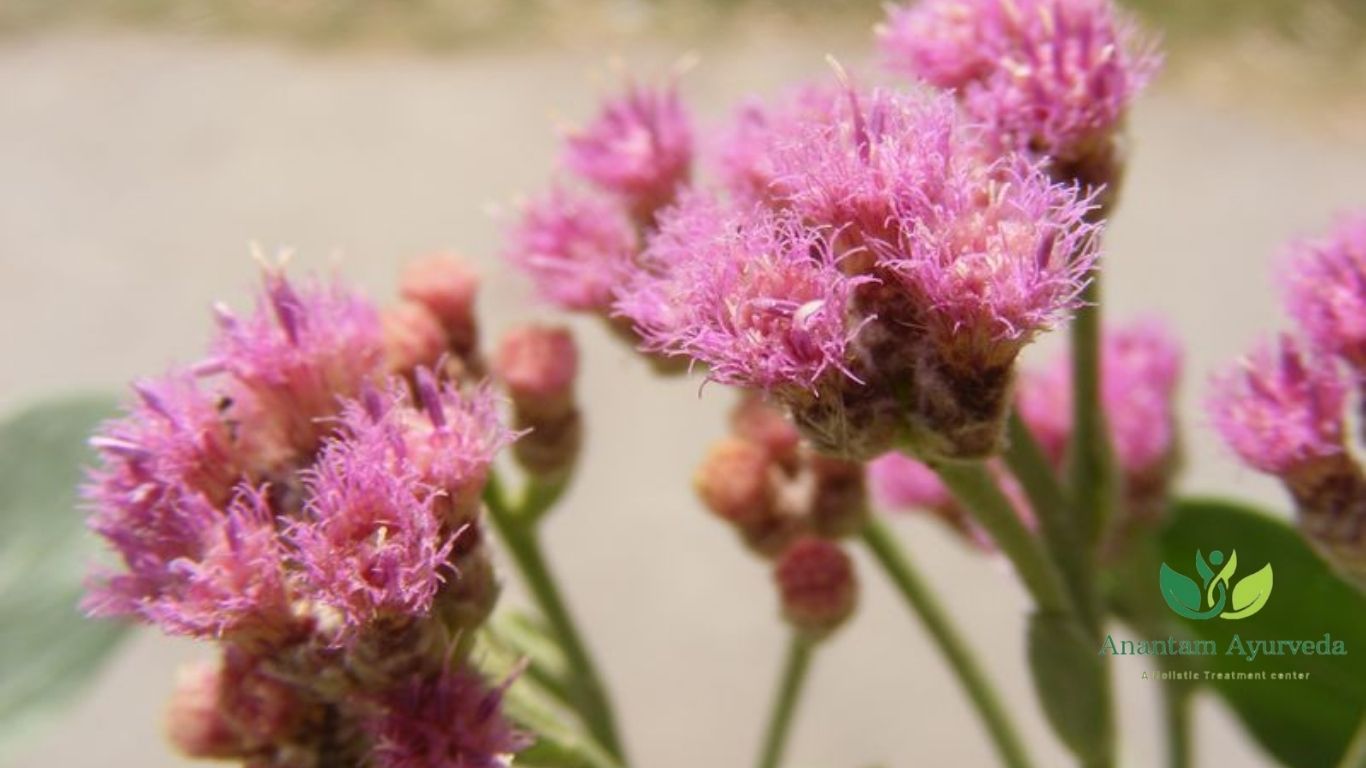
Scientific Studies Supporting Rasna’s Efficacy
Modern research validates many of Rasna’s traditional uses. Studies have demonstrated that Pluchea lanceolata possesses:
1. Anti-inflammatory and Analgesic Effects
Study: Anti-inflammatory and anti-arthritic activities of Pluchea lanceolata in experimental models
Published by: Journal of Ethnopharmacology (Elsevier)
Year: 2005
Key Findings:
-
The alcoholic extract of Rasna significantly inhibited inflammation in both acute and chronic models.
-
It showed remarkable efficacy in reducing paw edema and arthritis scores.
-
The study concluded that Rasna possesses strong anti-inflammatory and anti-arthritic properties comparable to standard drugs like indomethacin.
2. Antioxidant and Hepatoprotective Activity
Study: Evaluation of Antioxidant and Hepatoprotective Activity of Pluchea lanceolata
Published by: Indian Journal of Pharmaceutical Sciences
Year: 2007
Key Findings:
-
Rasna demonstrated potent free radical scavenging activity.
-
It offered significant protection against carbon tetrachloride-induced liver damage in rats.
-
Histopathological examinations confirmed liver cell regeneration and reduced oxidative stress.
3. Immunomodulatory Activity
Study: Immunomodulatory Effect of Pluchea lanceolata Leaf Extracts
Published by: Phytotherapy Research (Wiley Online Library)
Year: 2010
Key Findings:
-
Rasna leaf extract exhibited substantial stimulation of humoral and cell-mediated immunity.
-
It enhanced macrophage function and lymphocyte proliferation.
-
Suggested its role in boosting the immune system during chronic infections and inflammatory diseases.
4. Neuroprotective Effects
Study: Neuroprotective activity of Pluchea lanceolata against cerebral ischemia in rats
Published by: Asian Pacific Journal of Tropical Medicine
Year: 2013
Key Findings:
-
The hydroalcoholic extract of Rasna offered protection against brain ischemia-induced neuronal damage.
-
It helped maintain brain antioxidant status and reduced lipid peroxidation.
-
Indicated potential in managing stroke and neurodegenerative conditions.
5. Anti-arthritic Properties
Study: Pluchea lanceolata as an Antiarthritic Herb – Preclinical Evaluation
Published by: International Journal of Ayurveda Research
Year: 2012
Key Findings:
-
Rasna was shown to effectively reduce joint swelling, synovial hyperplasia, and inflammatory cytokines in arthritic rats.
-
Supported the classical Ayurvedic use of Rasna in treating Vata Vyadhi (neuromuscular and joint diseases).
6. Anti-diabetic and Hypolipidemic Activities
Study: Evaluation of Anti-Diabetic and Hypolipidemic Potential of Pluchea lanceolata Extract
Published by: International Journal of Green Pharmacy
Year: 2014
Key Findings:
-
Administration of Rasna extract lowered blood glucose levels and serum lipid profiles in diabetic rats.
-
Suggested its usefulness in managing type 2 diabetes and hyperlipidemia naturally.
The accumulated scientific evidence clearly supports the traditional Ayurvedic claims regarding Rasna’s therapeutic efficacy. Modern research confirms its potent anti-inflammatory, antioxidant, neuroprotective, hepatoprotective, immune-boosting, and anti-arthritic properties, further validating its inclusion in both preventive and curative healthcare systems.
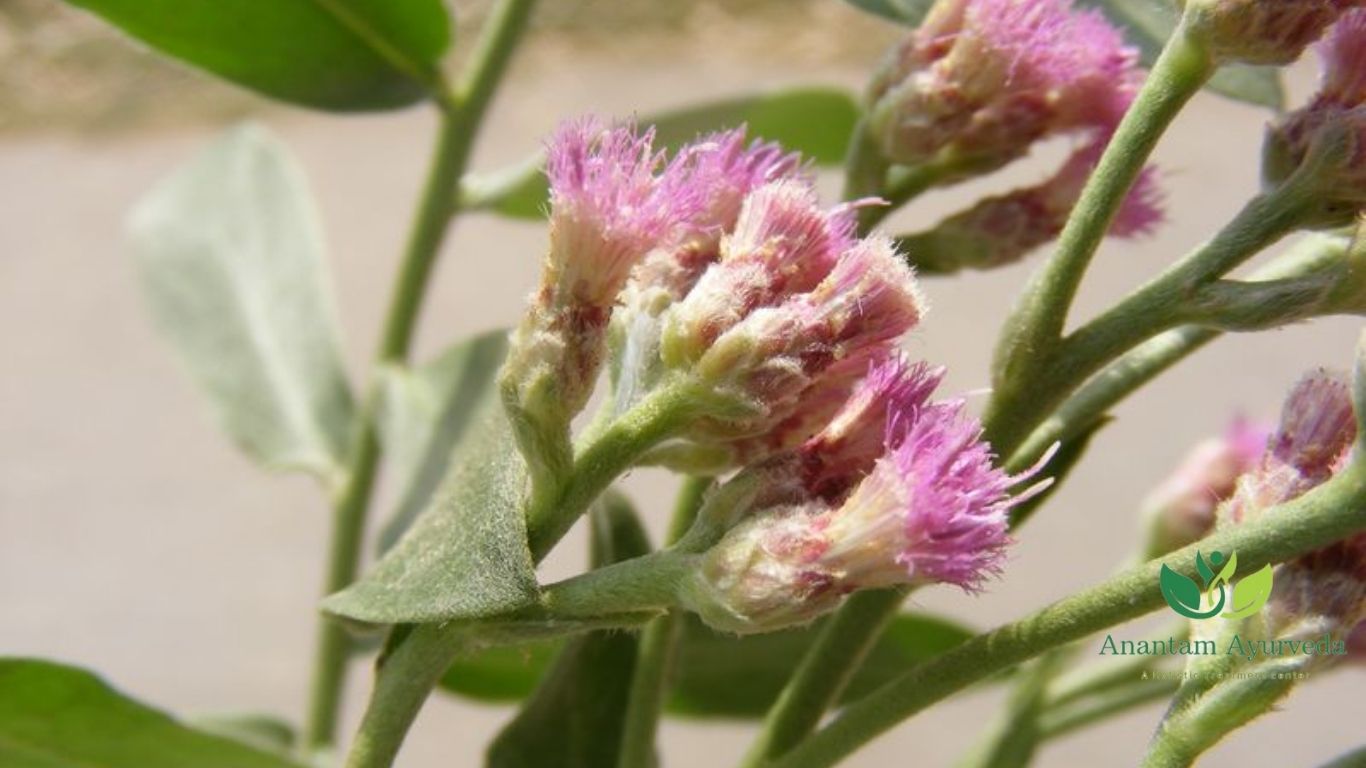
Cultivation and Sustainable Harvesting
To meet increasing demands, Rasna cultivation must prioritize sustainability. The ideal conditions for its growth include:
-
Soil: Sandy or loamy soil with good drainage
-
Climate: Hot and dry conditions
-
Propagation: Typically through stem cuttings
Sustainable practices ensure the conservation of this valuable herb and its continued availability for future generations.
Precautions and Contraindications
While it is generally considered safe, certain precautions are advised:
-
Pregnant and lactating women should consult healthcare providers before use.
-
Excessive intake may cause dryness or pitta imbalance due to its hot potency.
-
Individuals with hyperacidity or severe pitta disorders should use it with caution.
Professional supervision ensures safe and effective utilization of this potent herb.
Conclusion
Rasna (Pluchea lanceolata) stands as a testament to Ayurveda’s profound understanding of herbal therapeutics. With its wide spectrum of actions—from joint health to respiratory support—Rasna remains a gem in natural medicine. Modern validation of its properties continues to reinforce what ancient sages documented centuries ago. As we embrace holistic wellness, integrating time-tested botanicals like Rasna becomes not just beneficial but essential.
Frequently Asked Questions (FAQ) About Rasna (Pluchea lanceolata)
1. What is Rasna?
Rasna, scientifically known as Pluchea lanceolata, is a perennial herb belonging to the Asteraceae family. In Ayurveda, it’s esteemed for its ability to balance the Vata dosha, making it effective in treating joint and neuromuscular disorders.
2. What are the traditional uses of Rasna in Ayurveda?
Traditionally, it has been utilized for:
-
Joint and muscle pain: Alleviating conditions like arthritis and sciatica.
-
Respiratory ailments: Managing asthma, bronchitis, and cough.
-
Digestive issues: Addressing indigestion and abdominal discomfort.
-
Skin conditions: Treating eczema and ringworm.
-
Women’s health: Managing menstrual disorders like amenorrhea and dysmenorrhea.
3. What are the main bioactive compounds in Rasna?
it contains several bioactive constituents, including:
-
Moretenol
-
Neolupenol
-
Hexacosanoic acid
-
Tetracosanoic acid
-
Triacontanol
-
Stigmasterol
-
Beta-sitosterol-D-glucoside
These compounds contribute to its anti-inflammatory, analgesic, and antioxidant properties.
4. How is Rasna administered for therapeutic purposes?
it can be used in various forms:
-
Decoction (Kadha): Boil dried Rasna leaves in water and consume 10–15 ml once or twice daily.
-
Powder (Churna): Take 1–2 grams with lukewarm water after meals.
-
Oil: Apply Rasna-infused oil topically to affected areas for pain relief.
5. Are there any precautions or side effects associated with Rasna?
While it is generally safe when used appropriately, precautions include:
-
Pregnancy and breastfeeding: Consult a healthcare provider before use.
-
Dosage: Adhere to recommended dosages to avoid potential side effects.
-
Allergies: Discontinue use if any allergic reactions occur.
Always consult with a qualified healthcare professional before starting any new herbal regimen.
6. Can Rasna be used in combination with other herbs?
Yes, it is often combined with other herbs in Ayurvedic formulations to enhance its efficacy. For example:
-
Rasnasaptak Kashayam: A decoction combining it with other herbs to treat joint disorders.
-
Rasna Guggulu: A formulation used for musculoskeletal issues.
